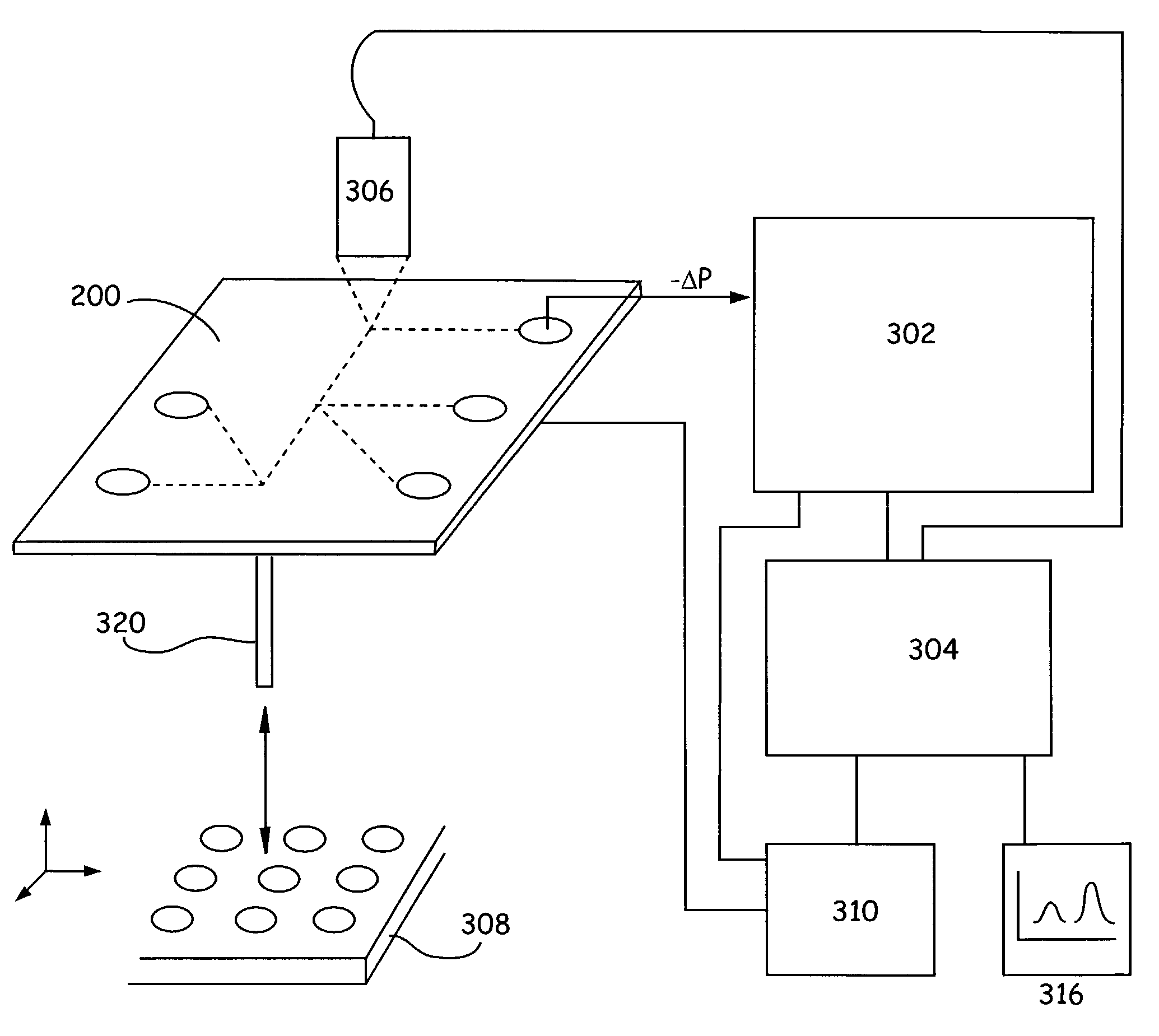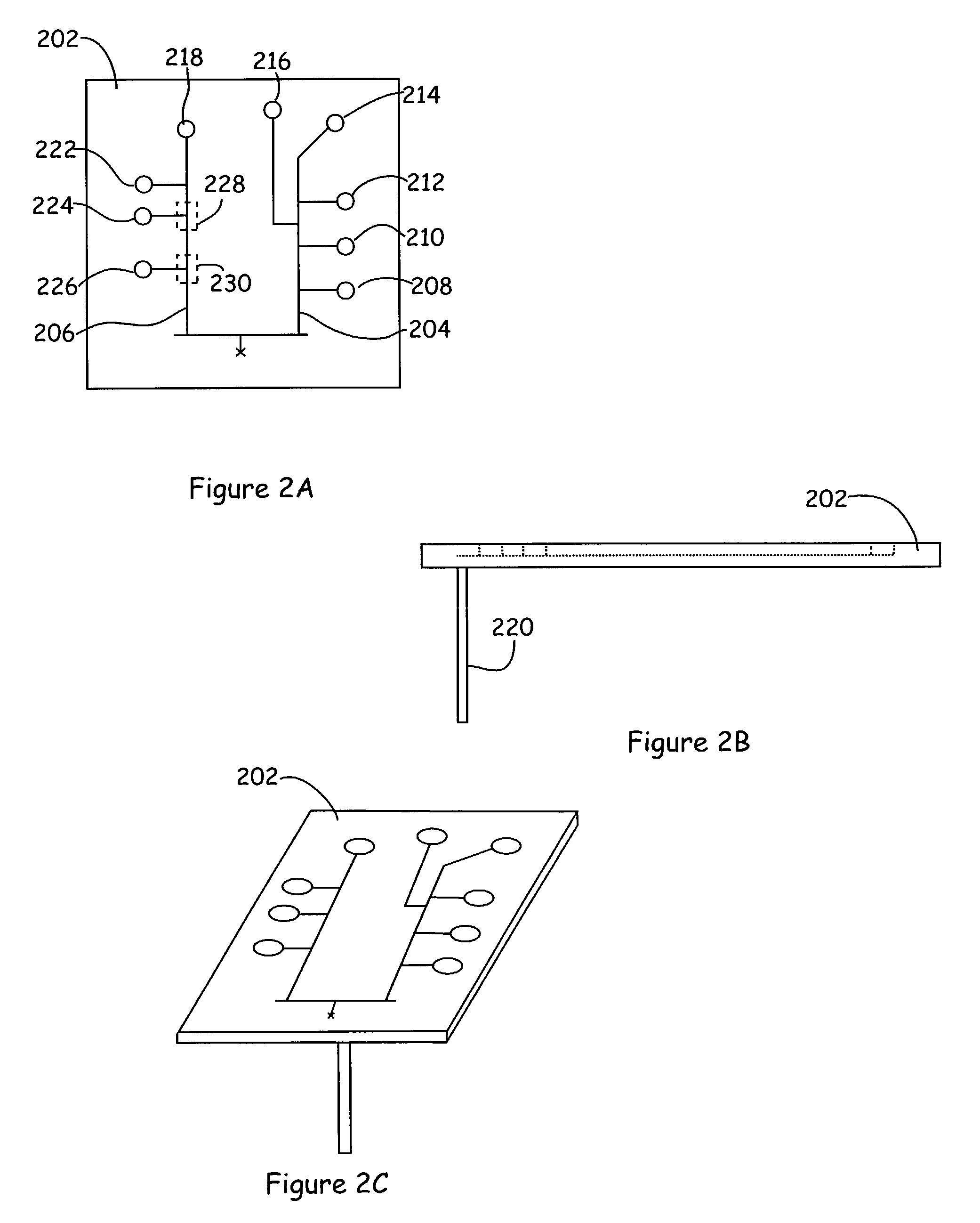Prevention of precipitate blockage in microfluidic channels
a microfluidic channel and precipitate blockage technology, applied in the direction of flow mixers, positive displacement liquid engines, burettes/pipettes, etc., can solve the problems of creating precipitate blockages, causing precipitate blockages to come, and unwanted precipitate blockages can also arise through, so as to reduce precipitate blockages in microfluidic channels, and prevent or ameliorate precipitate blockages. , the effect of reducing the cross-section
- Summary
- Abstract
- Description
- Claims
- Application Information
AI Technical Summary
Benefits of technology
Problems solved by technology
Method used
Image
Examples
Embodiment Construction
[0016]The methods and devices of the current invention directly address and solve problems associated with control and manipulation of fluidic material in microfluidic devices, especially dilution, mixing or transport of fluidic materials comprising precipitatable material, such as DMSO, or material comprising precipitate. Briefly, the invention provides devices and methods for: altering microchannel cross-sectional geometry in order to prevent formation of precipitate blockage of, e.g., microchannels; control of mixing together of fluidic materials (of either different types or of similar types) to, e.g., dilute a fluidic material in a manner which prevents / ameliorates formation of precipitate blockages of the microelements of the microfluidic device; applying an AC electric field orthogonal to the direction of fluid flow to help prevent / reduce precipitate sticking to the walls of the microchannel. As used herein, the term “cross-sectional geometry,”“channel geometry,”“cross-sectio...
PUM
| Property | Measurement | Unit |
|---|---|---|
| Concentration | aaaaa | aaaaa |
| Area | aaaaa | aaaaa |
| Electric field | aaaaa | aaaaa |
Abstract
Description
Claims
Application Information
 Login to View More
Login to View More - R&D
- Intellectual Property
- Life Sciences
- Materials
- Tech Scout
- Unparalleled Data Quality
- Higher Quality Content
- 60% Fewer Hallucinations
Browse by: Latest US Patents, China's latest patents, Technical Efficacy Thesaurus, Application Domain, Technology Topic, Popular Technical Reports.
© 2025 PatSnap. All rights reserved.Legal|Privacy policy|Modern Slavery Act Transparency Statement|Sitemap|About US| Contact US: help@patsnap.com



